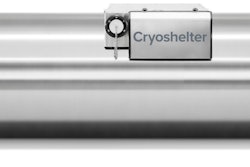
Cummins tracked down one of the first engines it ever produced and guess what? It still runs.
In 1919, the same year that Clessie Cummins founded the company that bears his name, the Indiana native introduced his first engine, a stationary 6hp oil burner, at the Indiana State Fair. Other models soon followed.
Known as the Cummins Hvid series (named for the man who developed the fuel system, Robert Hvid) these large engines—the 6hp weighs in at roughly 1,110 lbs.—began luring in farmers, ranchers, sawmill and factory owners who could string a belt around the engine’s beefy pulley to power water pumps, feed grinders, saws, etc., etc.
The 6hp model was soon joined by 1.5, 3 and 8hp models. They were advertised to run on vegetable, animal and petroleum based oils. Greg Haines, Cummins design engineer & volunteer at the Cummins Heritage Center, used kerosene to recently fuel the world’s oldest known Cummins engine, the 1919 Model C 6hp Hvid #142.
The engine’s steady rhythm at 520rpm is somewhat hypnotic and serves as a bit of a time machine to take you back to a time when horses, water wheels, steam and early BEVs were increasingly losing out to internal combustion.
“It’s one of my favorites,” Haines said of the six horse as it smoothly chugged along behind him.
Haines explained how he liked how he could see nearly every part of the engine without removing a bolt. The fuel pump, the large connecting rod, the flywheel…there isn’t much that you can’t see.
The engine shown in the video below had spent a long, productive life in California before Cummins Heritage Center acquired it in 2017 and restored it for the company's 100-year anniversary in 2019.
Haines talks more about the engine which includes a compression release lever that needs to be opened prior to hand cranking the massive fly wheel during ignition. And about hand cranking…be sure to remove the crank at just the right moment or else!










